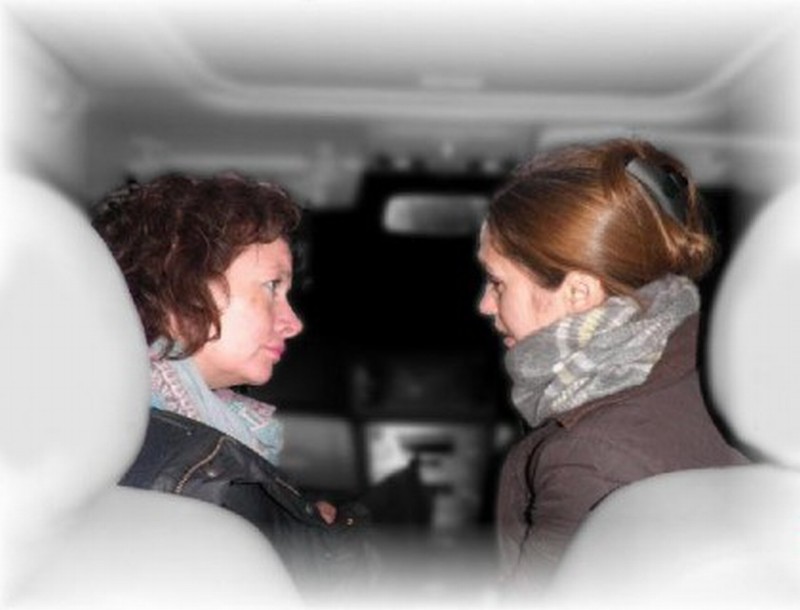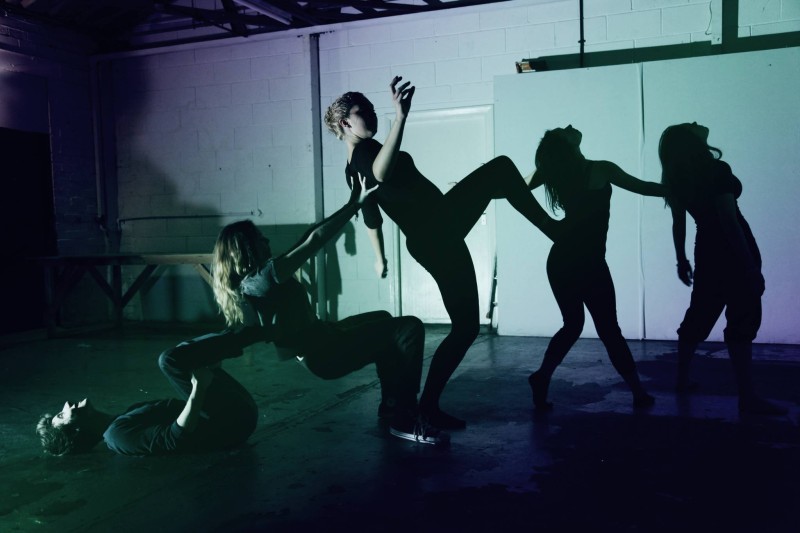 Returning for its second year at the Fringe (with a new set of stories) This Time Tomorrow offers an intriguing premise – the most intimate of site specific theatre that frames the audience as willing voyeur. We are led from the venue to a car park, to watch (participate in, almost) three separate pieces taking place in three separate vehicles. The intimacy, immediacy and familiarity of the space, for just two audience members at a time, makes for an engaging and visceral experience. There is something unendingly fascinating about being able to ‘spy’ on snippets of other people’s lives; essentially it could be argued that this is at the root of all theatre, and your role as audience in this context is heightened by being so close to the action as a silently watching passenger – singularly aware that any responses, be they laughter or shock, are immediately obvious to the actors.
Returning for its second year at the Fringe (with a new set of stories) This Time Tomorrow offers an intriguing premise – the most intimate of site specific theatre that frames the audience as willing voyeur. We are led from the venue to a car park, to watch (participate in, almost) three separate pieces taking place in three separate vehicles. The intimacy, immediacy and familiarity of the space, for just two audience members at a time, makes for an engaging and visceral experience. There is something unendingly fascinating about being able to ‘spy’ on snippets of other people’s lives; essentially it could be argued that this is at the root of all theatre, and your role as audience in this context is heightened by being so close to the action as a silently watching passenger – singularly aware that any responses, be they laughter or shock, are immediately obvious to the actors.
Within this framework, the first story that I experienced involved a classic mother and daughter stand-off; a teenage girl (played with complete credibility and the essential dash of angst) has been caught bunking from school. The actors enter the car mid-argument, with the worn mother attempting to keep her composure amidst the turmoil. As the argument progresses, we learn that the scenario is a potentially dangerous one; the daughter has been hanging out with much older men, caked in make-up and wearing a mini skirt. A scary concept for any parent; indeed my fellow audience member, a mother herself, found this scene particularly affecting. I would have liked to have seen a little more from the mother character too; she is trying to contain her anger and to hide a secret of her own, but the potentially nerve-inducing context of performing in such a small space on a first night seemed to affect the actor’s clarity of delivery a little.
Story two, in a second vehicle, was particularly effective, gentle and harrowing. An older couple run in from the Scottish rain having being shopping. As they inventory their purchases it becomes apparent that the husband has forgotten some items. At first there is humour in this and in the couple’s affectionate banter, but as time passes it seems that this forgetfulness is pointing to something altogether more concerning. I felt fully invested in these characters, who look set to face an imminent retirement beset by the challenges of dealing with some form of dementia. This story definitely left me wanting more, as did the energy and realism bought to its portrayal.
The final scene was my favourite, written with an excellent comic touch and performed in a nuanced and highly effective manner. A man and a woman appear to be about to go to a restaurant for their first date. The male character is particularly hilarious; a highly anxious and seemingly ‘odd’ man whose overly careful speech and physical quirks make him captivating to observe. His ‘date’ responds well as a surprisingly patient and energetic foil who seems determined to push him out of his comfort zone by encouraging him to try new food. The twists and turns in the narrative were captivating; I almost wanted to pull the woman aside and advise her to get out of the car, but by the end, surprisingly, the pair find some touching common ground and seems to bode well for a future (slightly odd) relationship! In all, the form heightened my engagement with these characters, ensuring this played out as drama and not simply theatrical ‘experience’. This well executed concept proved highly appealing to the voyeur in all of us.
 Having seen some of Sleeping Trees’ previous shows, my expectations were high for this comedy-theatre performance, presented in a rotating bill parodying either the ‘mafia’ or ‘western’ genre. The inclusion of a live three-piece, The Physics House Band, on stage made this production particularly distinctive. First, spatially, as the set-up immediately becomes more gig-like than theatrical, leaving the actors with a limited amount of room (nonetheless used very well) and secondly by bringing a vibrancy and energy to what is already a highly vibrant and energetic performance.
Having seen some of Sleeping Trees’ previous shows, my expectations were high for this comedy-theatre performance, presented in a rotating bill parodying either the ‘mafia’ or ‘western’ genre. The inclusion of a live three-piece, The Physics House Band, on stage made this production particularly distinctive. First, spatially, as the set-up immediately becomes more gig-like than theatrical, leaving the actors with a limited amount of room (nonetheless used very well) and secondly by bringing a vibrancy and energy to what is already a highly vibrant and energetic performance.



